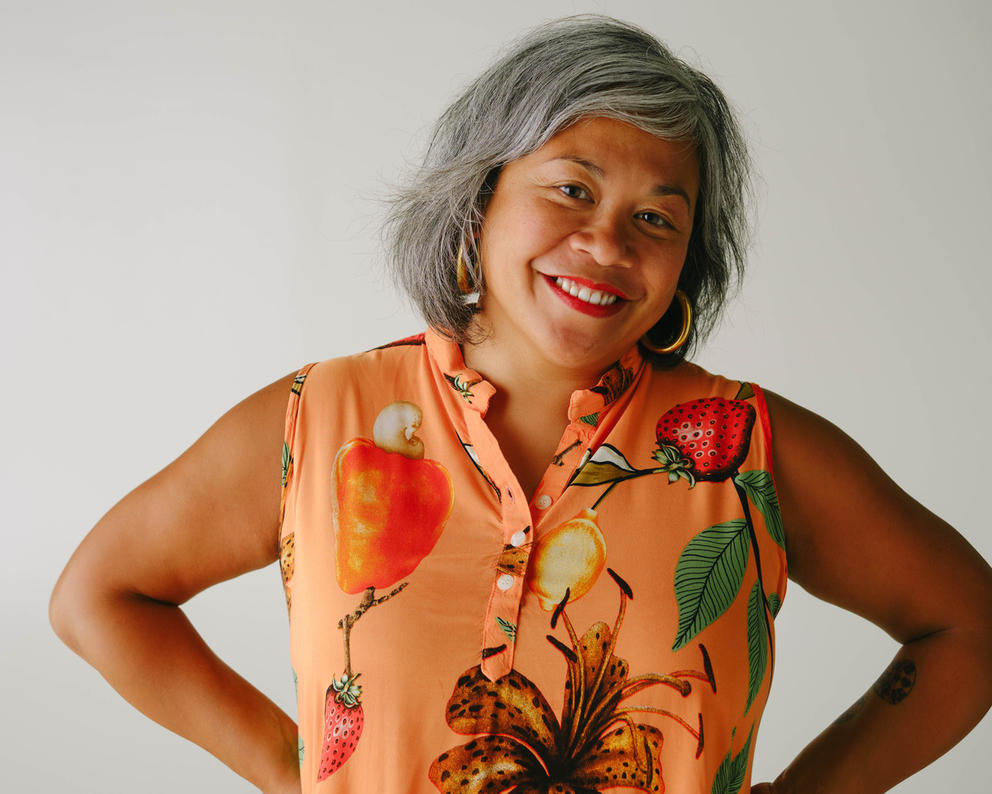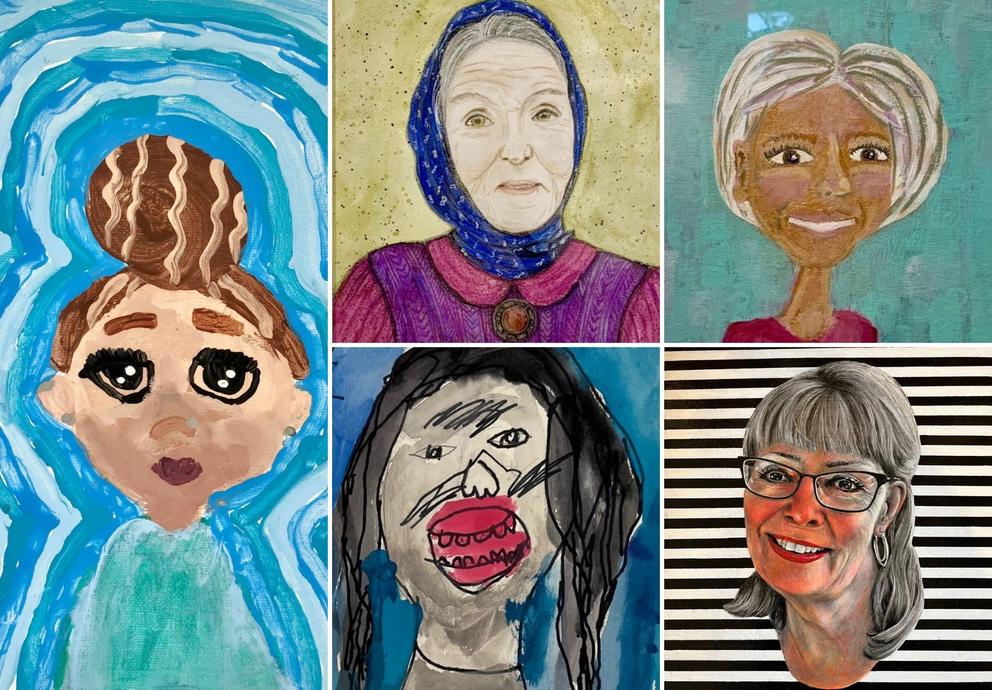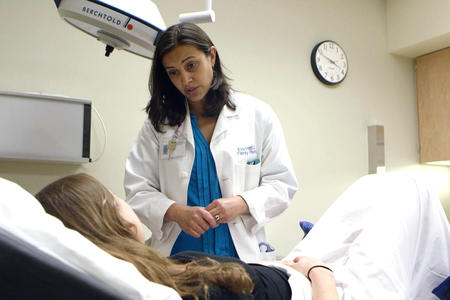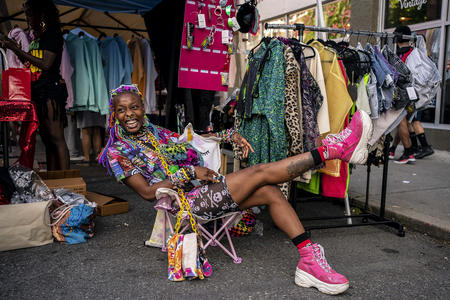The 1,294 words she did end up writing, in the form of a viral New York Magazine story about how the pandemic pushed millions of people (mostly women, many of whom were Black and brown and/or mothers) out of the workforce, tapped into this well of grief. “I have essentially dropped out of the workforce and been absorbed into housework and caring for my children, where there are no wages, no protections, no upward path, just a repetitive circle,” Garbes wrote.
The essay ricocheted across the internet, as many women (including Melinda French Gates and Elizabeth Warren) shared it — and shared in Garbes’ frustration.
Garbes has nursed the essay into a new book, Essential Labor: Mothering as Social Change, set to publish May 10, on the heels of Mother’s Day (reminder: this Sunday) and coinciding with Asian American and Pacific Islander Heritage Month.
Wary of pigeonholing herself, Garbes wasn’t exactly keen on following up her frank, what-you-really-need to-know-about-pregnancy book Like a Mother (2018) with another memoirish, mother-themed nonfiction book. But “the pandemic revealed that mothering is some of the only truly essential work humans do,” Garbes writes in Essential Labor, a blend of memoir, research and social commentary.
In the book, Garbes stretches her definition of “mothering” to encompass a broad swath of caretakers, like nurses, domestic workers and child care professionals. Through research and personal anecdotes (many of which discuss Garbes’ Filipinx heritage and upbringing), Garbes builds a theory that although the work of caretaking, or mothering — “making people feel dignified, valued, and whole” — may be the least valued, it is the most important in order to nurture a better world.
A collage of artworks on view in "Portrait of an Artist’s Mother," a show featuring portraits by local youth at the Museum of Museums, also known as MoM. Featured here, clockwise from left to right, are works by Bayleigh Burns, Vasilisa Moruga, Kaitlyn Bell, Liviya Thoreson and Sid from Montlake Elementary. (Images courtesy of MoM)
For now, though, as the leaked Supreme Court draft opinion underscored, we still live in a country “where bodily autonomy can never be taken for granted,” to borrow a phrase from Essential Labor. In an online panel conversation on “Pregnancy, Midwifery and Motherhood” earlier this week, Garbes recalled her own abortion, called abortion care providers heroes and reminded the audience, “Most of us who have abortions are mothers.”
If you want to hear more from Garbes, she is embarking on a semivirtual speaking tour and will be making a stop in her hometown (May 17) to discuss her book with local chef Melissa Miranda (of Musang) in a panel hosted by the Seattle Public Library.
Looking for more memoirs, maybe for Mother’s Day? Local author and journalist Putsata Reang has a brand-new book, Ma and Me. In this lyrical memoir, Reang chronicles how her relationship with her mother curdles when she comes out as gay — and how family legends, the pressure of filial duty and the trauma of bloodshed (in this case the genocide in Cambodia) can persist through generations. Reang will discuss her book in conversation with Susan Lieu (heads up — the Seattle writer has a memoir, too, due out in 2023) at the Seattle Central Library (on May 16; to be recorded and streamed later as well).
For another look at motherhood, head over to the Museum of Museum’s (aka MoM) first annual Mother’s Day pop-up exhibition Portrait of an Artist's Mother. The show features nearly 300 paintings and drawings by local youth who tried to capture the essence of their mother, which, in a way, is also kind of an attempt at a self-portrait. (The show is open Saturday noon-6 p.m. and Sunday 11 a.m.-3 p.m. for a closing day celebration, with mimosas for grown-ups.) “Our mission is to increase the artist population of this region,’ MoM founder Greg Lundgren wrote in an email, “and moms play a vital role in that process.”
Speaking of creative ecosystems, critters and creatures are lurking this May in a thicket of new Seattle art shows exploring the animal kingdom, the nature of the beast and the call of the wild.
Kicking off the animal theme is the quirky group show HUMAN/ANIMAL at AMcE Creative Arts (through June 12), which features 10 local and national artists exploring “what it is to be a human animal.” Highlights include surreal, ceramic statuettes by Debra Broz, who collects kitschy secondhand figurines, which she de- and re-constructs into animal-human hybrids, like three-dimensional exquisite corpse drawings. Also look out for 18th century-style “pannier” skirts made from deconstructed photos of bird plumage in Johanna Goodman’s collages; ethereal, allegorical watercolors by local artist Sarah Gordon; and lifelike bird paintings by Matt Adrian, who can boast of the most straightforward artist statement we’ve ever read: “Avian portraits. Non sequitur titles.”
And in the new group show Birds of a Feather: A Selection from Pacific Northwest Coast Mythology at Stonington Gallery (May 5-28), flying high in the sky are the eagles, ravens, hummingbirds and mythological thunderbirds on prints, carvings, glass sculptures and drums created by local Indigenous artists, including Preston Singletary, Jeffrey Veregge and Raven Skyriver. For many Northwest tribes, birds are symbols of hope and transformation and, the exhibit text announces, “often take on the form of spirit guides, reminding us to look to the future with hope or look within for strength.”
Seattle artist Stevie Shao is also looking to mythical motifs in a new show titled Animals That Hunt at Night. Consisting of wooden cutouts of a panther, hyena, dragon and other animals painted in her trademark neo-folk style, the show opens on First Thursday (May 5) at Gallery ERGO, a newish artist-owned gallery space on the lower level of Pike Place Market. “I’m drawn to using animals and plants in my work because of the types of folktales and motifs I grew up with as a Chinese American,” Shao told me. “This kind of suggestion that everything has an inherent value and that each being has a meaning.”
If you’re heading out to Pioneer Square for First Thursday, I’d like to put a few other shows on your radar:
< At the artist-run gallery SOIL, the promising group show Lo Segrados, Nuestros Cuentos (May 5-28) features work by artists Nico Inzarella, Christie Tirado and Scott Méxcal, each of whom approaches the themes of labor and immigration from a multitude of perspectives and materials.
< After a two-year pandemic hiatus, 4Culture’s gallery space is reopening, with a show by local artist Nate Clark. Titled Squinch, the show features Clark’s hand-tied nets and cedar constructions (through May 27).
< Local artist Hanako O'Leary opens her first solo show in Seattle, Izanami, at King Street Station (May 5-July 7). “It started as work about the right to abortion,” O’Leary writes. “Then it became about the distorted narratives and lack of female heroes in ancient folktales…. Ultimately my work is about feminine power.”
Get the latest in local arts and culture
This weekly newsletter brings arts news and cultural events straight to your inbox.








